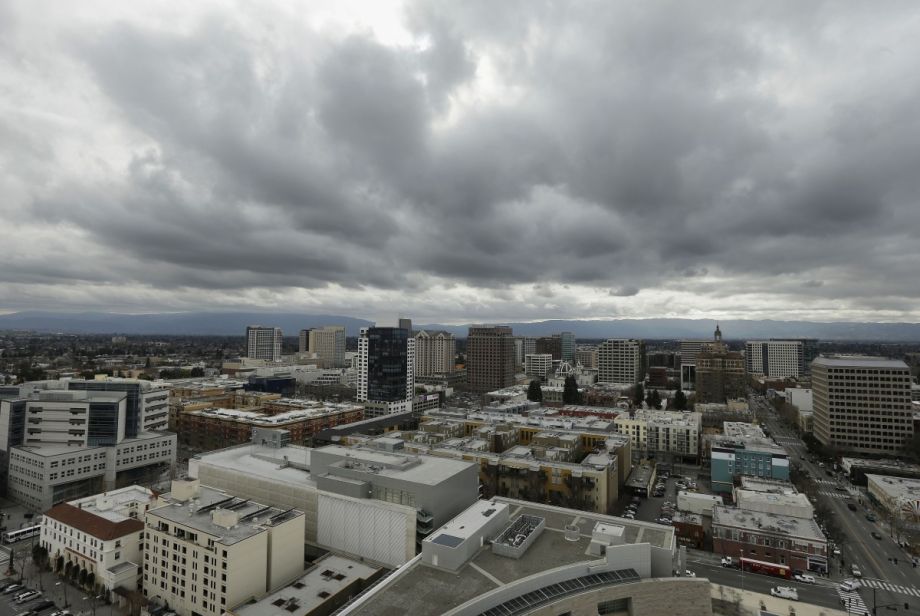If you live in a major American city, chances are your housing market has increasingly limited options for affordable living, and your elected officials are starting to acknowledge it as a problem — maybe even a crisis. If you live in San Jose, the biggest city in the San Francisco Bay Area and the self-proclaimed “Capital of Silicon Valley,” a shortage of affordable housing has been your reality for a long time.
“We’ve always had a challenge in the South Bay, especially in Silicon Valley, because we have been over-producing jobs and under-producing housing,” says Leslye Corsiglia, executive director of the housing advocacy group SV@Home and a former director of housing for the City of San Jose. “It’s gotten worse along the way, but it’s always been a problem. I would say it’s been a problem for the last 20 years.”
The explosive growth of the tech industry was never accompanied by proper planning for new housing, Corsiglia says.
“So as a result, we’ve just seen longer and longer commutes, overcrowding, overpayment, a lot of 50-somethings who are having to get roommates — things that people didn’t expect to be doing,” she says.
This fall, San Jose voters will be asked to open a new front in the fight for affordable housing with one of the biggest local housing bond initiatives in recent memory. San Jose Mayor Sam Liccardo and the city council finalized the terms of a $450 million bond referendum that would direct money to affordable housing production and preservation at three different income levels, promising to create up to 3,550 units of new affordable housing in the city. The bond follows on the heels of a $900 million bond approved by Santa Clara County voters in 2016 to address homelessness. It will require approval by two-thirds of voters on the November ballot.
“Like every large city on the west coast, we’re facing a housing crisis that’s reaching into every household and every neighborhood,” Liccardo says. “While we have much to celebrate in our economic success in Silicon Valley, our city has more than 4,000 residents who sleep on the street or under a bridge every night. For them and for the thousands of teachers, nurses, and working families, this bond will be an important step forward.”
San Jose has been ranked as the most unaffordable metro area in the United States, and the fifth-most unaffordable city in the world. According to the city’s Housing Department, 20 percent of residents are severely cost-burdened — paying more than half of their income for housing — and it requires roughly four-and-a-half minimum-wage jobs to afford a typical two-bedroom apartment in the area.
Last October, Liccardo released a 15-point housing plan with the goal of creating 25,000 new homes in San Jose over the next five years, of which 10,000 would be affordable units. The plan focuses on transit-oriented development in the downtown area and North San Jose, mixed-use development in “struggling business districts,” creating housing for the “missing middle” income level, and generating new funds for affordable housing. In June, the Housing Department released a new Affordable Housing Investment Plan suggesting that, accounting for all the existing sources of housing funds, the city would need an addition $548 million to meet the city’s goals.
The $450 million bond that voters will be asked to approve would be allocated in a few ways. At least $150 million would be used to serve residents earning less than 30 percent of area median income (AMI). Another $75 million would be set aside for the “missing middle” residents earning between 80 and 120 percent of AMI. The remaining $225 million could be spent flexibly on affordable housing for any income level up to 120 percent of AMI. The ballot question explicitly mentions housing for “working families, veterans, seniors, teachers, nurses, paramedics, and other workers.” The money would be spent on land acquisition, new construction, and acquiring existing housing for preservation.
“It is a necessary but not sufficient tool that will enable thousands of homeless residents to get off the street and thousands more working families to afford stable housing,” Liccardo says. “We know we’re going to need many more tools and we’re working fervently with many partners on our expanding our toolbox.”
Specifically, Liccardo says the city is working with philanthropic foundations and private partners to create a “missing middle” fund. The fund would have a goal of attracting low-return but safe investment in housing for middle-income earners, with a minimal subsidy from the city. No outside money has been committed for that effort yet.
Also, last week, the city council came as close as it’s come to date to approving a commercial linkage fee, which would extract money from new commercial developments for housing. Most other cities in the area already have a linkage fee, says Corsiglia. The proposal could be considered again next month. Meanwhile, in November, voters across California will be asked to approve a $4 billion bond for statewide affordable housing efforts.
An increase in property taxes would repay the San Jose bond. The city estimates that approving the bond would raise taxes on San Jose property owners by 8 cents per $1,000 of assessed value, or around $24 a year for a $300,000 house.
How will Liccardo and other advocates make a pitch for the $450 million San Jose measure?
“Loudly,” Liccardo says. “Our focus is on reaching the many homeowners who may be undecided because they already have their piece of the American dream, and what we’re finding is that, even among those more satisfied and affluent residents, they have concerns about the ability for their children to be able to afford to live here when they’re grown.”

Jared Brey is Next City's housing correspondent, based in Philadelphia. He is a former staff writer at Philadelphia magazine and PlanPhilly, and his work has appeared in Columbia Journalism Review, Landscape Architecture Magazine, U.S. News & World Report, Philadelphia Weekly, and other publications.
Follow Jared .(JavaScript must be enabled to view this email address)
















